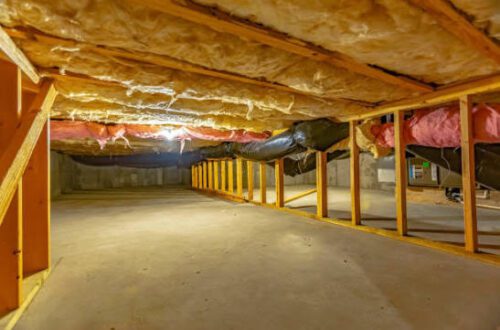From windows to cabinetry, building a home requires you to make a huge number of executive decisions. For many people, that pressure can make decision-making a challenge, but as the average cost to build a single-family home is $289,415, messing up isn’t an option most people can afford.
Out of all the aspects to consider when building or renovating a home, perhaps none are more important than the flooring. So how can you go about selecting the right option?
Keep reading to learn how to choose flooring for your home that you won’t regret later on.
1. Consider the Amount of Foot Traffic
When looking at different types of flooring, consider the room that you’ll use it for. Will it be a high-traffic area that people walk on daily, or will it be the guest bathroom that gets used every other month?
If it’s an area that will see a high volume of foot traffic, your best bet is to go with a sturdier option that won’t show wear and tear over time. Engineered hardwood, vinyl, and bamboo are some of the best options for high-traffic areas of the house.
If the room in question is in a quieter area of the house, then the material you use for the flooring won’t be as important. Cork is one example of a softer material. It won’t hold up well if people walk on it 24 hours a day, but it’s cushiony and helps cancel noise.
2. Check Your Budget
Of course, your budget will also have a huge impact on the types of flooring that you’re able to get. While stone everything might match your aesthetic, your wallet might veto that decision.
Luckily, many inexpensive materials can be long-lasting and durable. Viny flooring might bring up horrible and outdated colors to mind, but times have changed. Today, it’s attractive, cheap, and won’t require a lot of maintenance after installation.
Laminate flooring is another great and affordable option. It gives the appearance of a hardwood floor, but at a much cheaper cost. Just make to clean up any water that you spill on the surface. Check out this guide for a more in-depth breakdown of wood flooring vs laminate vs vinyl plank.
Remember that some options may be more expensive initially, but may be less expensive in the long run. You don’t want to have to worry about repairing your floors every few years.
3. Factor in Light
Aside from taking into account the room, you should also consider how much light will stream into it. Different amounts of light work well with certain flooring materials, while others don’t.
For example, most people go with bright and shiny tiles in their kitchens. However, if too much light pours through the windows, it can create glare problems. Consider choosing a darker option to help even everything out. You can also select a pattern that can alternate between dark and light.
If you have a smaller room, going with a brighter option can be a good idea. In these spaces, reflections can help make everything look larger. Using lighter materials in rooms such as bathrooms and sunrooms can make them feel lighter and airier than they already are.
4. Choose the Right Colors
Aside from providing durability and longevity, many modern flooring options allow you to choose from a huge assortment of colors. This makes it easy to mix and match different colors and styles, adding a sense of cohesion to your home.
When considering colors, keep in mind what the other colors in the room will be. You should also take into consideration what each focal point of different areas will be.
For example, if you want visitors to notice your kitchen’s massive double sink, you might not want to choose a floor color that’s too loud, as it will take attention away from it. Instead, go with something more subdued and neutral.
However, in other cases, flooring with stunning hues and rich colors can help blend different elements together. Wood and its many shades are also a great way to create a warm look. Regardless of which colors you choose, make sure that everything matches.
5. Consider the Future
Remember that in most cases, you’ll have the floors you choose for as long as you have your house. This means that you should be thinking long-term instead of trying to satisfy your wants at that exact moment.
Bright pink vinyl floors might sound like a fun and trendy idea, but remember that you’ll probably try to sell your house at some point in the future. You might think that they’re fun and cute, but potential buyers might not agree.
If you’re unsure of what flooring option to choose, it’s a good idea to go with something simple and neutral. Tile, hardwood, and plywood are some of the different types of materials that you can stick materials over at a later point, once you make up your mind.
You should also consider what your household situation will look like in a few years. Will pets or toddlers be joining your family anytime soon?
Wondering How to Choose Flooring? This Guide Should Help
Whether you’re building a new home or renovating your existing one, finding the perfect flooring is important. If you’re wondering how to choose flooring for your home, following the tips laid out in this guide should help you out.
Do you now have a better idea of how to choose the right types of flooring for your home? If you do, make sure to take a look at some of our other articles for more home-related guides and tips.






